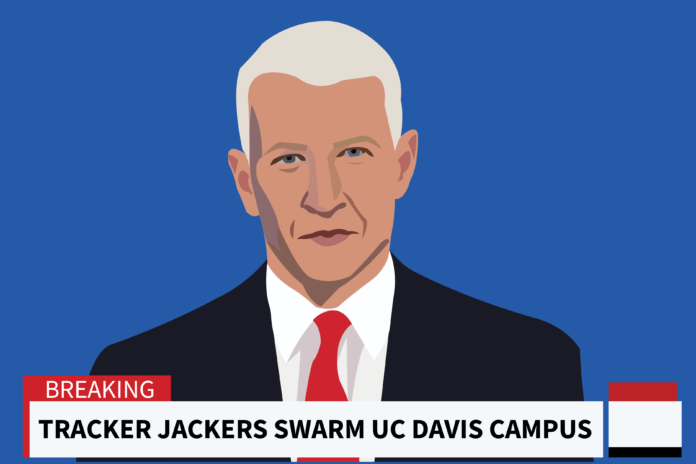A dystopian fiction: the mockingjay of reality
The “Hunger Games” series gained immense popularity back in the 2010s — so much so that its dystopian fiction has clawed its way into reality. The gore and perverted essence that made the series so captivating may not be so appealing in real life. But if we observe today’s realities, perhaps the “Hunger Games” wasn’t so far from the truth as we once thought.
1: Tracker Jackers
Recent headlines have succeeded in terrifying and amusing the American public with the absurdity that is the Japanese giant hornet a.k.a “murder hornet.” Native Asian hornets have found their way to Washington state, according to The New York Times.
Besides its two-inch long monstrous body length, the Japanese giant hornet is quite cartoonish. The creature flew right out of The Davis Varsity Theatre’s screening of “Ant-Man and Wasp” and into reality.
Confession, that’s false. It didn’t fly out of “Ant-Man and Wasp,” but perhaps “The Hunger Games.” Tracker Jackers, larger and stronger genetically mutated wasps, with a sting strong enough to kill. Sound familiar?
As soon as the headlines of these notorious murder hornets came to my attention, tracker jackers were the first thought in my mind. Both the fictional and nonfictional species seem to be the Superman of hornets — or maybe Lex Luthor.
The wet and wooded habitat of Washington state is ideal for the hornets. By chance, in the 74th annual Hunger Games which took place in the first novel of the trilogy, the setting of the arena was a wet and wooded environment. Coincidence? I think not!
2: We are the 99%
The dystopian world of Panem is divided into 12 Districts in which a select few hold all the wealth and power while the others gravely suffer. While the privileged Districts are fine dining, the remaining feed off the scraps of the wealthy, confined to their District with no wiggle-room to rise in power or status.
What a horrifying truth, yes? Take a closer look and you’ll see that this isn’t so different from the current state of America as you might think. The gap between the rich and poor is growing and further deepening into a systematic habit.
While the rich get richer, the poor get poorer. The one percent of Americans bathing in their wealth is analogous to Districts such as District 1 (must be the lucky number for the rich) with the economic and social disparities magnified by the so-called “gap.”
The extent of this imbalance is so apparent in the novels and films of “The Hunger Games” that perhaps its fictional dystopia opens eyes to the truth right outside our very doors. The problem isn’t restricted to the spine of the book but seeps into the backbone of our society as well.
3: Blood, Sweat and Tears
“The Hunger Games” is the biggest reality television show of Panem. It’s like “Survivor” on steroids. Each of the 12 districts pick one girl and one boy (systematic gender binarism, take it or leave it) to compete to the death in an annual “game” broadcast to the public.
Bigger than the Grammys, the annual event is to die for, literally. It romanticizes violence and manslaughter in the form of entertainment and a part of conventional culture. Normalizing such brutality may seem absurd until you realize “Call of Duty: Modern Warfare 2019” was the No. 1 best-selling video game in 2019.
From a young age, children are exposed to violence from the media. As a result, they may be prone to fear the world around them or behave aggressively towards others. Although there is no tangible comparison to the Hunger Games in real life, this digital age is tiptoeing on a fine line between artificial and natural.
So while “The Hunger Games” may not be as fictional as once perceived, with real-life tracker jackers on the loose, may the odds be ever in your favor.
Written by: Sierra Jimenez — arts@theaggie.org




